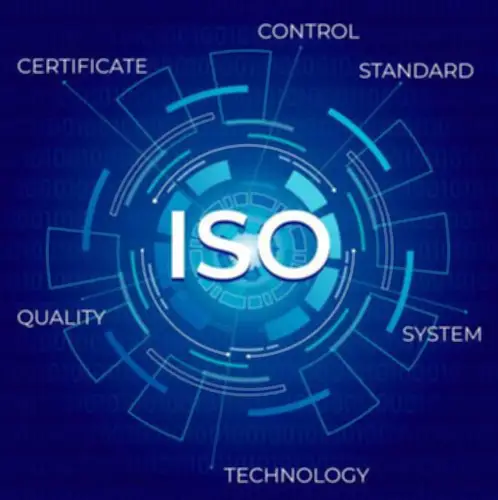What Is A Trigger And Effect Fishbone Diagram?
Involving all group members in the creation of a trigger and impact diagram is essential for identifying and addressing the basis causes of a problem. This diagram ought to have the impact on the center and the different classes of potential causes branching out from it. Creating a trigger and impact diagram is an easy process that can help teams identify and tackle issues. For example, a healthcare staff uses a cause and impact diagram to identify the potential causes of affected person cause-effect diagram falls in a hospital. It is price noting that each diagram may use a barely completely different strategic framework.
What Are The 6 Ms Of The Ishikawa Diagram?
This can result in identifying the mistaken trigger and attempting to solve the mistaken problem. Working with a group encourages inventive considering and lets you study the problem from completely different angles and views. Fishbone diagrams are often known as Ishikawa diagrams, herringbone diagrams, or cause and impact diagrams. An instance could be a manufacturing problem brought on by a damaged machine and an untrained operator.

Related Ishikawa Diagram + Fishbone Diagram Resources
- Each of the main causes (not lower than two and usually not more than six) must be written in a field and linked to the central column by a line at an angle of about 70 degrees.
- Scatter diagrams are helpful to search out out if a relationship between two variables exists and to solve a problem within the quickest and simplest way.
- Illustrate the relationships between two or extra knowledge sets with this venn diagram template.
- The extra specific you can be, the narrower your focus is as you problem-solve.
- As it seems like a skeleton of a fish, known as as fish bone diagram and likewise as ishikawa diagram within the name of its founder.
We will talk about in more element later the necessity to check every causal relation in the C-E diagram for logical consistency. Failure to make those checks can tremendously cut back the usefulness of the diagram and infrequently lead to the waste of priceless time accumulating and analyzing the wrong information. If some branches appear overloaded with causes compared to the others, think about whether they might be most appropriately divided into two or more main branches.
Generalized Equipment Problem-solving Sequence
Miro has both fishbone diagram templates that are simple to customize and can help you get began in no time. A manufacturing group uses a cause and effect diagram to establish the causes of product defects. The diagram reveals that a defective machine part may contribute to defects within the product’s measurement, form, and colour, in addition to affect the machine’s general efficiency. The staff realizes that addressing the faulty machine parts could significantly influence the final product’s high quality. MindManager makes brainstorming, analyzing information, and discovering challenges simpler.
The trigger and effect diagram is a highly useful gizmo for visually figuring out the attainable causes and effects of a selected drawback. Its visibility contributes to the method of creating actions geared toward offering efficient options that eliminate the problem from its root cause. In 1943, Kuaouru Ishikawa gave life to a diagram, which is now a part of the cultural bases of an analytical and systematic approach to high quality management.
Trigger And Effect Diagrams: A Information
Clearly, when one is actually engaged on a C-E diagram in a group assembly, one can’t all the time keep the lines neat and tidy. In the ultimate documentation, however, it is found that using parallel lines makes for a more passable diagram. A diagram composed of lines with random orientation like the following instance is harder to read and appears much less professional. Continue to maneuver systematically down the causal chain within every major or secondary cause until that one is exhausted before moving on to the subsequent one. The second key strength of this software is that its graphic representation permits very complex conditions to be introduced, exhibiting clear relationships between elements.

The major classes of potential causes are organized as branches slanting off above and beneath this line to the left. Typical branches include the four “M’s”—man, methods, supplies, and machines. Specific possible causes become the detailed twigs, as proven in Figure 6-7. The diagram offers a structured approach to root cause evaluation by breaking down a problem into its numerous contributing components. These factors are categorized into major branches that resemble the bones of a fish, with the issue statement positioned on the head of the fish. The phenomenon to be explained is “Lost management of automobile.” Some of the possible main factors contributing to that lost control are a flat tire, a slippery highway, mechanical failures, and driver error.
The trigger and effect diagram is also called the ‘fishbone’ diagram, the Ishikawa diagram, or the ‘feather’ diagram. Moreover, a Pareto chart is another useful tool for breakdown or cause distribution analysis. On the floor, it looked as if the cause might have been related to improper upkeep practices that lead to a leak. The following illustration is a close-up look at a PORTION of the Cause and Effect Diagram. As you presumably can see, the branches are subdivided into smaller branches and twigs.
Start with considered one of these units of categories and, after some time, rearrange the results into one other set of main areas that fit its explicit problem extra appropriately. Define clearly the impact or symptom for which the causes have to be recognized. For additional readability, it could be advisable to spell out what is included and what’s excluded.
If the variables are associated however the scatter could be very excessive then the relationship is most likely not direct. There may be one other issue that has not been thought-about that is varying and affecting the end result but it isn’t being measured or managed. Finding this different factor (usually by cause and effect diagrams) is generally essential in decreasing the variation and scatter.
This effect is often a symptom of the underlying drawback, and understanding it is essential to establish the potential causes. However, even with these limitations, the diagram can nonetheless be useful as a brainstorming tool for figuring out potential causes and interrelationships. Fishbone diagrams are a helpful way to explore new concepts, find the foundation explanation for a problem, or discover complicated ideas. Below, we’ll reply a few of the most common questions about these charts and how to use them. MindManager doesn’t just help you create charts – we also make collaboration easier.
